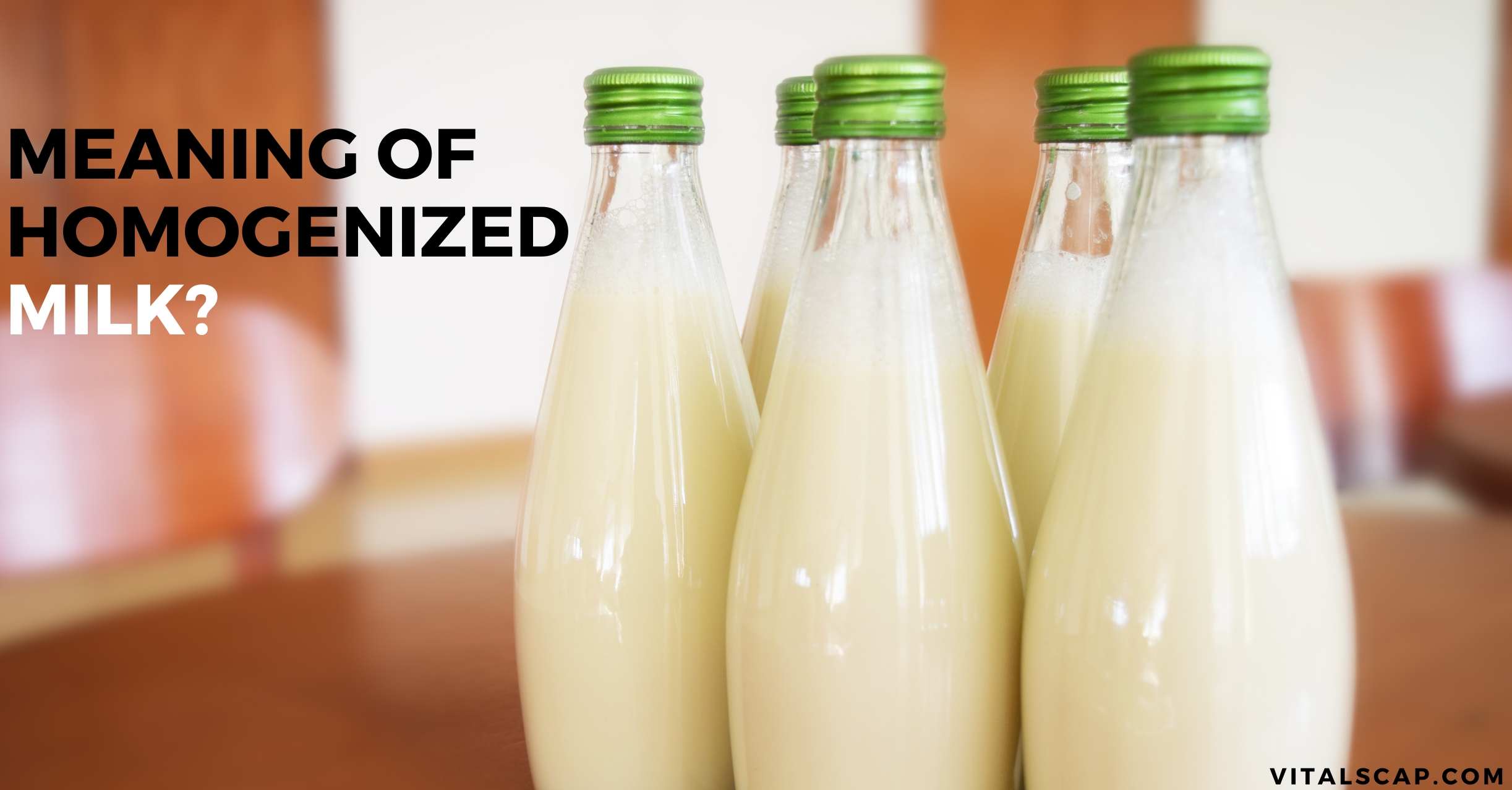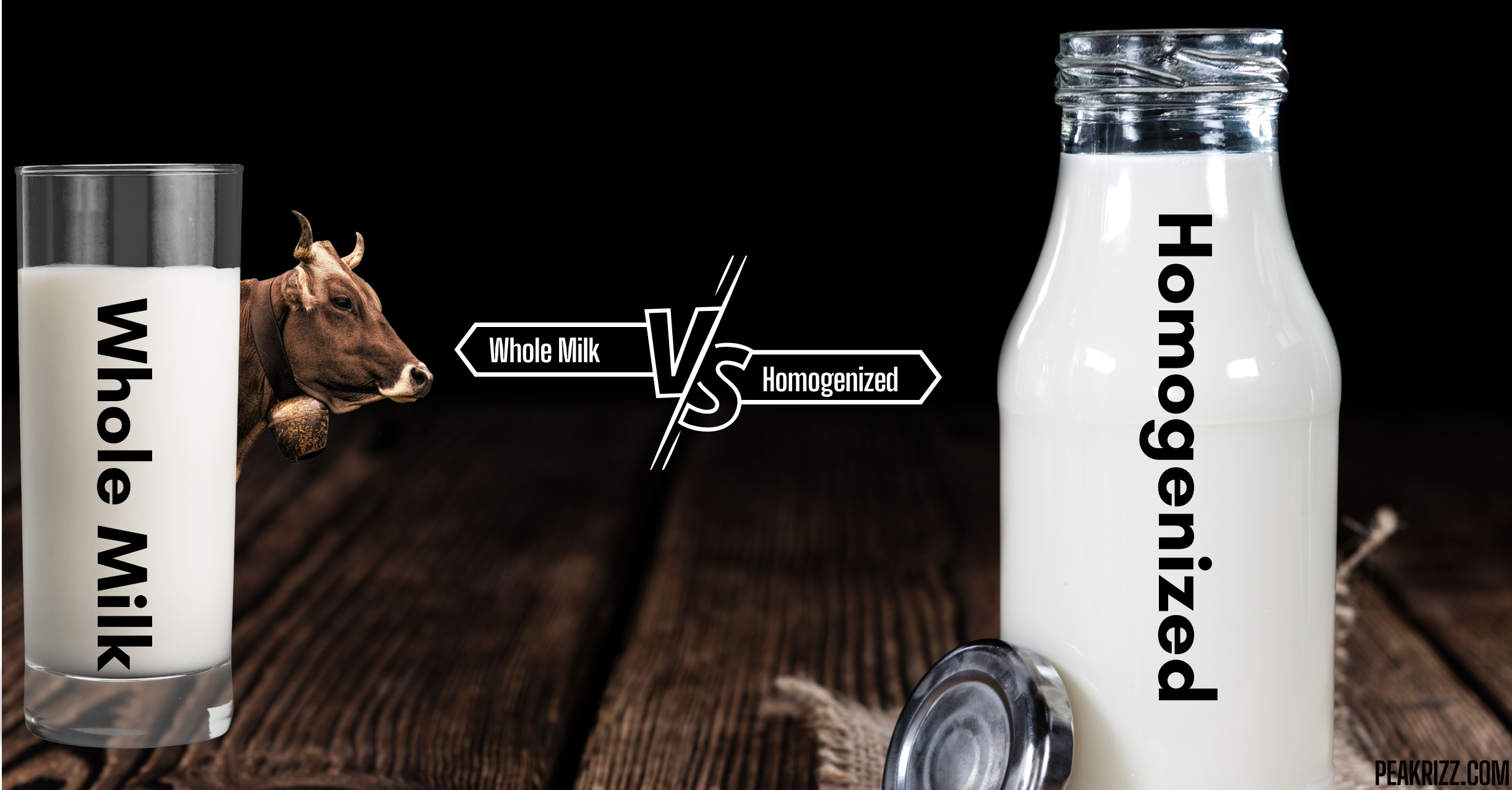Every morning, millions of Americans pour themselves a glass of milk without truly understanding the revolutionary milk processing technology behind their daily dairy consumption. Homogenized milk represents one of the most significant innovations in modern dairy products, transforming how we experience milk texture, milk shelf life, and consumer preference across the United States.
Understanding what is the meaning of homogenized milk? becomes crucial as American families spend over $15 billion annually on dairy products. This comprehensive guide reveals the fascinating science, surprising benefits, and essential facts about the milk homogenization process that changed dairy forever.
Meaning of Homogenized Milk?

Homogenized milk undergoes a specialized mechanical milk processing technique that creates uniform fat distribution throughout the liquid. Unlike non-homogenized milk, which naturally separates with cream rising to the top, homogenized varieties maintain a consistent milk texture and appearance from first pour to last drop.
The milk homogenization process involves forcing milk through specialized equipment under extreme pressure, breaking down large fat globules into microscopic particles. This revolutionary approach to dairy safety and quality emerged in America during the early 1900s, fundamentally changing dairy consumption habits across the nation.
Breaking Down the Science
The process creates uniform fat distribution by reducing fat globules from approximately 4 micrometers to less than 1 micrometer in diameter. This dramatic size reduction prevents cream separation and ensures consistent milk consistency throughout storage and consumption.
What Is Milk Homogenization?
Milk homogenization represents a sophisticated high-pressure processing method designed to improve dairy products’ quality and consumer preference. The process utilizes specialized machinery capable of generating pressures between 2000-3000 PSI, forcing milk through tiny valves that mechanically break apart fat globules.
Modern homogenizers employ two-stage processing systems. The first stage applies maximum pressure for primary fat globules breakdown, while the second stage ensures complete uniform fat distribution and prevents cluster reformation. This milk processing technology maintains the nutritional value of milk while dramatically improving visual and textural appeal of milk.
Industrial Applications
American dairy product facilities process millions of gallons daily using advanced homogenization equipment. The farm-to-table dairy journey includes multiple quality control checkpoints ,ensuring food safety standards compliance and optimal milk preservation techniques.
Expert Opinion
“Homogenized milk, when handled properly, has a longer shelf life due to even fat distribution,” Galer notes. This was especially beneficial during the Great Depression when families needed food to last longer. Importantly, homogenization does not change milk’s nutritional value or safety.”
Why Homogenize Milk?
Consumer preference drives the widespread adoption of homogenized milk across American grocery store chains. The process addresses multiple concerns affecting dairy consumption habits, milk shelf life, and overall satisfaction with dairy products.
Homogenized milk benefits extend far beyond simple appearance improvements. The process creates superior milk texture, enhanced milk taste profile, and improved convenience in modern dairy handling. American families benefit from consistent quality, reduced waste, and better milk preservation techniques throughout storage periods.
Key Advantages Include
- Extended shelf life through improved stability
- Consistent milk texture from container to container
- Enhanced visual appeal with uniform white appearance
- Improved mixing capabilities for cooking and beverages
- Reduced settling during transportation and storage
The economic impact proves significant for American households. Homogenized milk reduces waste through improved milk shelf life, allowing families to purchase larger quantities without spoilage concerns. This convenience in modern dairy consumption supports busy lifestyles while maintaining the nutritional value of milk.
Homogenized Milk vs. Whole Milk

Many Americans wonder, “Is homogenized milk whole milk?” and seek clarity about homogenized milk vs whole milk. Whole milk refers specifically to fat content (3.25%), while homogenization describes the milk processing method used to distribute fat globules evenly.
Most commercial whole milk sold in American grocery stores undergoes homogenization, creating products that are both whole milk and homogenized milk simultaneously. However, some specialty dairies offer non-homogenized milk options for consumers preferring traditional cream separation characteristics.
Different Milk Types
| Milk Type | Fat Content | Processing Method | Cream Separation | Shelf Life |
| Whole Homogenized | 3.25% | High-pressure processing | None | 7-10 days |
| Non-homogenized Whole | 3.25% | Minimal processing | Natural | 5-7 days |
| 2% Homogenized | 2% | Mechanical processing | None | 7-10 days |
| Skim Homogenized | 0.1% | Fat globule reduction | None | 7-10 days |
Pasteurized Milk vs. Homogenized Milk
Understanding “is homogenized milk pasteurized” requires recognizing these as separate processes serving different purposes. Pasteurization focuses on dairy safety by eliminating harmful bacteria through controlled heating, while homogenization addresses milk texture and uniform fat distribution.
Most American dairy products undergo both processes. Pasteurization typically occurs first, heating milk to 161°F for 15 seconds or 145°F for 30 minutes to ensure dairy safety. Subsequently, homogenization creates the smooth milk consistency consumers expect.
Process Timeline
- Raw milk collection from dairy farms
- Quality testing for food safety standards
- Pasteurization for pathogen elimination
- Homogenization for fat globule distribution
- Packaging and grocery store distribution
Research Finding
“The purpose of homogenization is to mix and disperse milk fat globules. It is a purely mechanical process that does not affect the nutritional value of milk.”
Nutritional Composition
| Nutrient Category | Nutrient | Amount | Daily Value % | Health Benefits |
| Macronutrients | Protein | 8g | 16% | Muscle building, tissue repair |
| Fat | 8g | 12% | Energy, vitamin absorption | |
| Carbohydrates | 12g | 4% | Quick energy source | |
| Calories | 150 | 8% | Daily energy needs | |
| Essential Vitamins | Vitamin D | 2.5 mcg | 13% | Bone health, immune support |
| Vitamin A | 500 IU | 10% | Vision, immune function | |
| Vitamin B12 | 1.1 mcg | 46% | Nervous system health | |
| Riboflavin | 0.4 mg | 31% | Energy metabolism | |
| Pantothenic Acid | 0.9 mg | 18% | Hormone production | |
| Niacin | 0.2 mg | 1% | Heart health support | |
| Vital Minerals | Calcium | 280 mg | 28% | Bone and teeth strength |
| Phosphorus | 220 mg | 22% | Bone formation support | |
| Potassium | 115 mg | 2% | Heart health, blood pressure | |
| Zinc | 1 mg | 9% | Immune system support | |
| Selenium | 5 mcg | 9% | Antioxidant protection | |
| Iodine | 56 mcg | 37% | Thyroid function |
The Journey of Homogenized Milk
The journey of homogenized milk begins at American dairy farms, where careful dairy consumption habits and farm-to-table dairy practices ensure quality from source to consumer. Modern dairy products logistics involve sophisticated milk preservation techniques, maintaining freshness throughout distribution networks.
Milk processing technology facilities receive raw milk within 48 hours of milking, immediately testing for quality markers, bacterial counts, and nutritional value of milk. The milk homogenization process occurs in climate-controlled environments maintaining optimal temperatures for dairy safety.
Production Stages
- Farm collection and initial quality testing
- Transportation in refrigerated tankers
- Processing facility arrival and secondary testing
- Pasteurization for dairy safety
- Homogenization for uniform fat distribution
- Packaging in various container sizes
- Distribution to grocery store networks
Characteristics of homogenized milk include consistent white color, smooth mouthfeel, and absence of cream separation. Quality indicators help consumers identify properly processed dairy products meeting food safety standards.
Homogenization and Health
The question “Is homogenized milk good or bad?” generates considerable debate among health-conscious Americans. Scientific research consistently demonstrates that homogenized milk outweighs potential concerns, with dairy safety remaining paramount throughout the milk processing journey.
Disadvantages of homogenised milk claims often lack scientific support. Comprehensive studies examining dairy consumption habits and long-term health outcomes show no significant negative effects from mechanical milk processing techniques used in homogenization.
Addressing Common Health Concerns
Cancer Risk Questions:
The concern “does homogenized milk cause cancer?” has been thoroughly investigated by medical researchers. Current scientific evidence shows no causal relationship between homogenized milk consumption and cancer development. The American Cancer Society and FDA consider homogenized milk safe for regular consumption.
Digestive Impact:
What are the impacts of homogenization on milk digestibility? Research indicates that smaller fat globules may actually improve digestibility for some individuals. The uniform fat distribution creates a consistent milk texture that many people find more palatable than non-homogenized milk.
Cardiovascular Health:
Studies examining heart disease risk associated with dairy products find no increased danger from homogenized milk versus non-homogenized milk varieties. The nutritional value of milk remains consistent regardless of processing method.
Choosing the Perfect Homogenized Milk

American grocery store aisles offer numerous homogenized milk options, making informed selection crucial for families prioritizing dairy safety, the nutritional value of milk, and consumer preference. Understanding label terminology helps identify quality dairy products meeting food safety standards.
Label reading becomes essential when comparing homogenized milk vs whole milk options, pasteurization methods, and organic certifications. Look for clear milk processing information, expiration dates, and vitamin D fortification details.
Shopping Guidelines:
- Check expiration dates for optimal milk shelf life
- Verify pasteurization for dairy safety
- Compare nutritional labels for protein, calcium, and vitamin content
- Consider organic options for pesticide-free dairy consumption habits
- Choose appropriate fat levels based on dietary needs
Storage recommendations include refrigeration below 40°F, avoiding temperature fluctuations, and consuming within recommended timeframes to maximize milk preservation techniques.
Beyond Drinking Homogenized Milk
Homogenized milk excels in numerous culinary applications beyond simple beverage consumption. The uniform fat distribution creates superior performance in cooking, baking, and specialty beverage preparation compared to non-homogenized milk alternatives.
Coffee applications benefit significantly from homogenized milk characteristics. The consistent milk texture produces better foam stability for lattes and cappuccinos, while the uniform fat distribution prevents separation in hot beverages.
Culinary Benefits:
- Enhanced mixing in baked goods and desserts
- Improved texture in cream soups and sauces
- Better foam formation for coffee beverages
- Consistent results in ice cream and frozen treats
- Smooth integration in smoothies and shakes
Professional chefs frequently prefer homogenized milk for its predictable behavior during cooking processes and consistent milk taste profile that doesn’t vary between containers.
Frequently Asked Questions
Is homogenized milk good for you?
Homogenized milk retains essential protein, calcium, and vitamin D while offering improved milk texture, supporting the nutritional value of milk for Americans.
Which milk is better, pasteurized or homogenized?
Pasteurization ensures dairy safety while homogenization improves milk consistency; most commercial dairy products undergo both milk processing methods effectively.
What is the purpose of homogenized milk?
The milk homogenization process prevents cream separation, creates uniform fat distribution, extends milk shelf life, and enhances the visual and textural appeal of milk.
What is the difference between toned milk and homogenized milk?
Toned milk reduces fat through dilution, while homogenized milk maintains original fat globules but distributes them evenly throughout.
Can we drink homogenised milk daily?
Daily homogenized milk consumption provides essential protein, vitamin A, calcium, and riboflavin as part of healthy American dairy consumption habits.
Which is better: whole milk or homogenized milk?
Whole milk indicates fat content (3.25%), while homogenized milk describes milk processing; most whole milk sold is homogenized milk.
Conclusion
Understanding homogenized milk transforms your dairy consumption habits completely. This revolutionary milk processing technology creates consistent milk texture, enhanced milk shelf life, and improved convenience in modern dairy while maintaining essential nutritional value of milk including protein, calcium, vitamin D.
Armed with comprehensive knowledge about uniform fat distribution and dairy safety, American families can confidently make informed decisions about their daily milk consumption, appreciating the science behind their grocery store selections and the benefits of modern dairy products innovation.
More Post:

Passionate about innovation and growth. Dedicated to managing, optimizing, and creating seamless experiences while supporting diverse content and users with professionalism and clarity every day.








